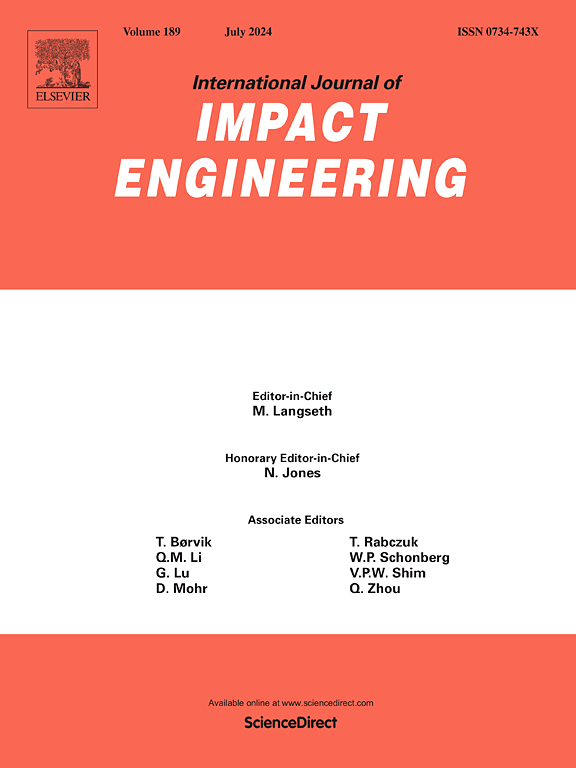Assessment of bending waves in Torsion Hopkinson Bar experiments using Photon Doppler Velocimetry
IF 5.1
2区 工程技术
Q1 ENGINEERING, MECHANICAL
International Journal of Impact Engineering
Pub Date : 2024-10-11
DOI:10.1016/j.ijimpeng.2024.105139
引用次数: 0
Abstract
A Photon Doppler Velocimetry system that measures the propagation of elastic shear waves in a Torsion Hopkinson Bar (THB) system is presented. The method uses multiple fibre optic probes located symmetrically on opposing sides of the apparatus bars, and provides data with high spatial (a laser irradiated spot size of ) and temporal resolution that is ultimately limited by the data acquisition system and used electronic components. A series of validation experiments simulating the movement of the bar subjected to bending and misalignments demonstrated that this approach is effective in detecting and accounting for the bending waves. The THB experiment under non-ideal conditions, where a combination of shear and bending waves propagates in the system, conclusively confirmed that the disturbance in the acquired signals can be properly addressed with the proposed arrangement of the PDV probes. It was reflected in similar measurements of the component of tangential velocity to the strain gauges. This approach shown to be complementary to the conventional strain gauge technique, but can provide better precision and be more robust under loading and/or temperature conditions that may affect the reliability of strain gauge measurements.
利用光子多普勒测速仪评估扭转霍普金森棒实验中的弯曲波
本文介绍了一种光子多普勒测速系统,用于测量扭转霍普金森棒(THB)系统中弹性剪切波的传播。该方法使用多个光纤探头,对称安装在仪器杆的对立面,可提供高空间分辨率(激光照射光斑尺寸为 35μm)和时间分辨率的数据,但最终受限于数据采集系统和使用的电子元件。一系列模拟棒材在弯曲和错位情况下运动的验证实验表明,这种方法能够有效地检测和解释弯曲波。在系统中传播剪切波和弯曲波的非理想条件下进行的 THB 实验最终证实,采用所建议的 PDV 探头排列方式,可以正确处理所采集信号中的干扰。应变片切线速度分量的类似测量结果也反映了这一点。这种方法是对传统应变计技术的补充,在可能影响应变计测量可靠性的加载和/或温度条件下,可以提供更高的精度和更强的稳定性。
本文章由计算机程序翻译,如有差异,请以英文原文为准。
求助全文
约1分钟内获得全文
求助全文
来源期刊

International Journal of Impact Engineering
工程技术-工程:机械
CiteScore
8.70
自引率
13.70%
发文量
241
审稿时长
52 days
期刊介绍:
The International Journal of Impact Engineering, established in 1983 publishes original research findings related to the response of structures, components and materials subjected to impact, blast and high-rate loading. Areas relevant to the journal encompass the following general topics and those associated with them:
-Behaviour and failure of structures and materials under impact and blast loading
-Systems for protection and absorption of impact and blast loading
-Terminal ballistics
-Dynamic behaviour and failure of materials including plasticity and fracture
-Stress waves
-Structural crashworthiness
-High-rate mechanical and forming processes
-Impact, blast and high-rate loading/measurement techniques and their applications
 求助内容:
求助内容: 应助结果提醒方式:
应助结果提醒方式:


